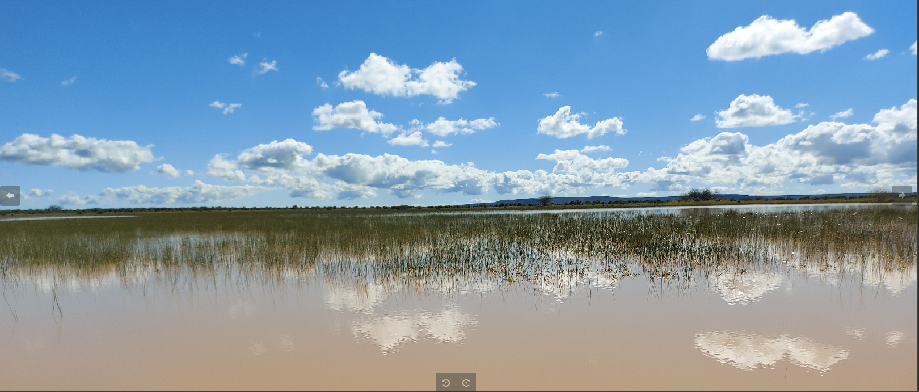Freshwater ecosystems – rivers and inland wetlands – are the lifeblood of South Africa, underpinning our water security, economy, and cultural heritage. However, more than 60% are in a compromised ecological condition. This places at risk the vital services they provide, and the incredible biodiversity they support. It is of great concern that the number of threatened freshwater species continues to rise.

of 222 river ecosystem types
Threatened
13%
of 222 river ecosystem types
Well Protected
of 82 inland wetland types
Threatened
5%
of 82 inland wetland types
Well Protected
of 222 river ecosystem types
Not protected
16%
of 1417 freshwater taxa assessed
Threatened
of 82 inland wetland types
Not protected
20%
of 1417 freshwater taxa assessed
Not protected
Rivers and inland wetlands are among the most threatened1 and least protected ecosystems in South Africa. More than 64% of river ecosystem types and 65% of wetland ecosystem types are threatened (Key Message B2).
Over 30% (82/222) of river ecosystem types are both highly threatened and under protected (Not Protected). Over 20% (17/82) of inland wetland ecosystem types are both threatened and under-protected (Not Protected).
It follows that the freshwater species which these ecosystems support are increasingly highly threatened.
Over 36% of all assessed freshwater taxa and 66% of assessed endemic freshwater taxa are threatened, while 36% of all freshwater fishes and 66% of endemic freshwater fishes are threatened.
Freshwater fishes are the most threatened of all taxa in South Africa. With escalating pressures from human activities and climate change, it is highly concerning that 59 waterbird species have been uplisted, with 5 listed as Endangered, 11 Vulnerable and the remaining Near Threatened, while the African Shaggy Rat (previously African Marsh Rat) and the Laminate Vlei Rat have been uplisted from Least Concern to Near Threatened during the current assessment. This is the first time that freshwater invertebrates have been included into the national biodiversity assessment.
In the face of increasing pressures, South African freshwater ecosystems continue to degrade faster than the investment in their conservation, management and rehabilitation. Key pressures include disruptions to the hydrological regime, deteriorating water quality (Key Message A3), direct habitat loss and biological invasions (Key Message A4), as well as the exacerbating effect of climate change (Key Message A1).
As freshwater ecosystems are affected by land use within their receiving catchment (Key Message A2), they are not easily protected within nature reserves and, therefore, implementation of other effective area-based conservation measures (OECMs2), ecological corridors and connectivity3 is vital. We must collaborate across all levels of society (Key Message C1) to conserve and wisely manage our remaining intact rivers and inland wetlands, and the freshwater species that they support. We must take urgent action to increase attention and funding on freshwater ecosystems and species, and to implement restorative actions in strategically identified areas.
For more information on river ecosystems
Click on the following or see the links in the left panel of this page to find more information on river ecosystem types, river ecological condition, key pressures, river Ecosystem Threat Status, river Ecosystem Protection Level, key actions and knowledge gaps.
For more information on inland wetland ecosystems
Click on the following or see the links in the left panel of this page to find more information on inland wetland ecosystem types, wetland ecological condition, key pressures, wetland Ecosystem Threat Status, wetland Ecosystem Protection Level, key actions and knowledge gaps.
For more information on freshwater species
Click on the following or see the link in the left panel of this page to find more information on the status of assessed freshwater species.
Notes
Ecosystem types and species are referred to as ‘threatened’ when they have been categorised as Critically Endangered, Endangered or Vulnerable.↩︎
Other effective area-based conservation measures (OECMs) are defined as “a geographically defined area other than a Protected Area, which is governed and managed in ways that achieve positive and sustained long-term outcomes for the in-situ conservation of biodiversity, with associated ecosystem functions and services and where applicable, cultural, spiritual, socio-economic, and other locally relevant values” (CBD, 2018).↩︎
Develop footnote on connectivity↩︎